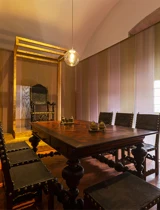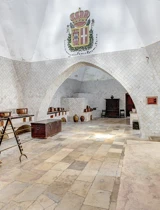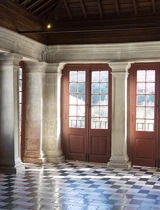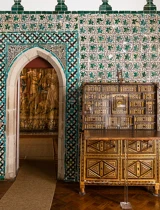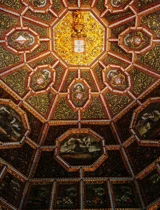
State Bed Room
State Bed Room
This is one of the rooms in the palace whose original function is unknown.
Possibly built in the 15th century.
Today, this is where a 17th-century state bed that belonged to the Dukes of Cadaval stands.
Discover the objects on display in this room.

State Bed
- Portugal (?), 2nd half 17th century
- Ebony, rosewood, angelim, silver and copper
- Inv. No. PNS6207
This bed is one of the most emblematic pieces in the National Palace of Sintra and was acquired by Parques de Sintra in 2016. It is the only 17th-century state bed existing in the country. It acted as a symbol of the status and power of its owner and would have stood in a part of the palace with restricted access. A similar bed was used to display the body of King Afonso VI (1643–1683) in public after his death at the Palace in 1683.




